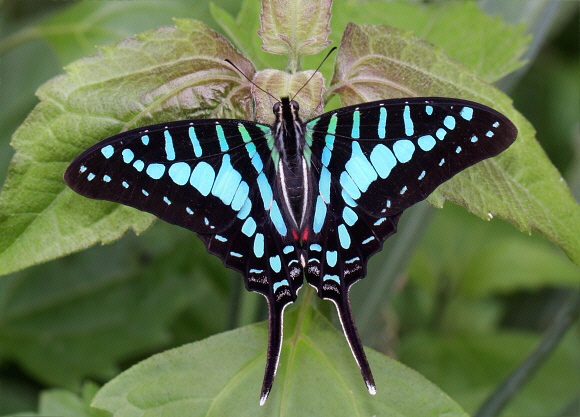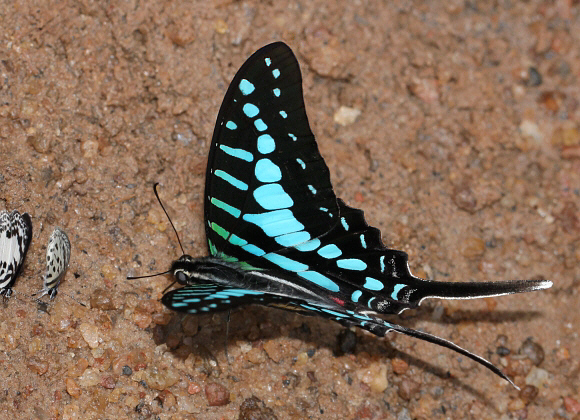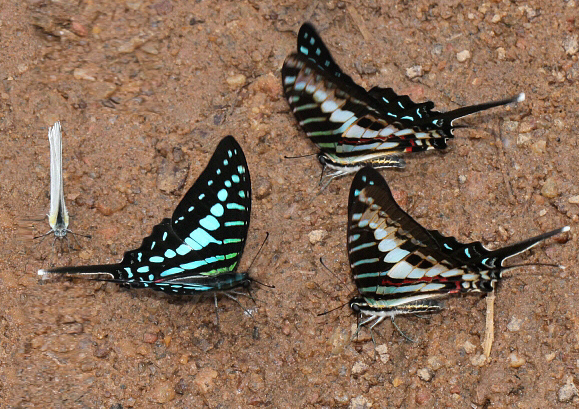
Introduction
There are about 90 recorded species of Papilionidae in the continent of Africa, including 37 in the genus Graphium.
Some Graphium species e.g. angolanus, almansor, philonoe and leonidas are without tails, but in others including kirbyi and policenes these are long and sword-like, hence the common name. The wings of Graphium species are typically dark brown with a pattern of translucent turquoise, yellow or white ‘windows’. Males have a fold on the inner edge of each hindwing which encloses plumes of androconial scales that disseminate pheromones to entice females into copulation.
Graphium policenes is probably the most beautiful of the Graphium species in Africa, and also one of the commonest and most widespread. It occurs in all forested regions of Africa, and is especially abundant in Ghana, Nigeria and Cameroon.
Habitats
This species breeds in rainforest habitats at altitudes between sea level and about 1000m, but is most abundant in the lowlands.

Lifecycle
The larvae feed on Artabortys, Annona (custard apple), Uvaria and other Annonaceae.
Adult behaviour
Males are seen far more frequently than females, and are often encountered in groups of as many as 30 individuals, imbibing mineralised moisture from muddy tracks and forest roads. When they are feeding, the whole group usually faces into the breeze. The wings are usually held open at an angle of about 45 degrees, and kept constantly quivering. If disturbed the butterflies immediately erupt into flight, but most of them usually re-settle within half an hour at the same spot. When not feeding they rest on the foliage of bushes, with wings held erect if it is hot, or outspread in cooler or hazy conditions.

